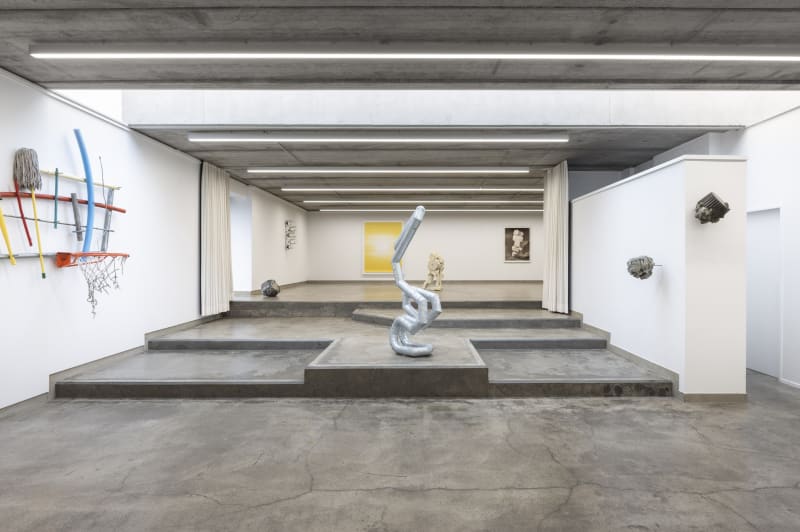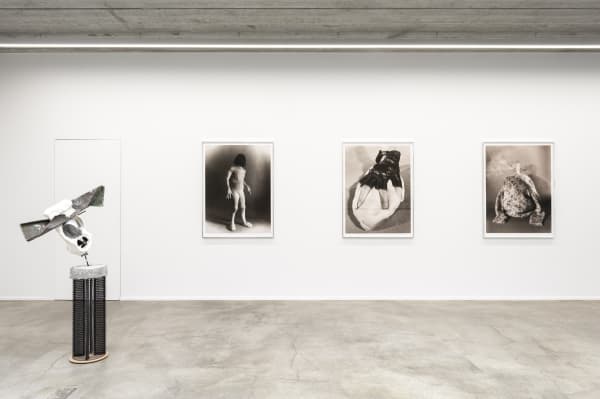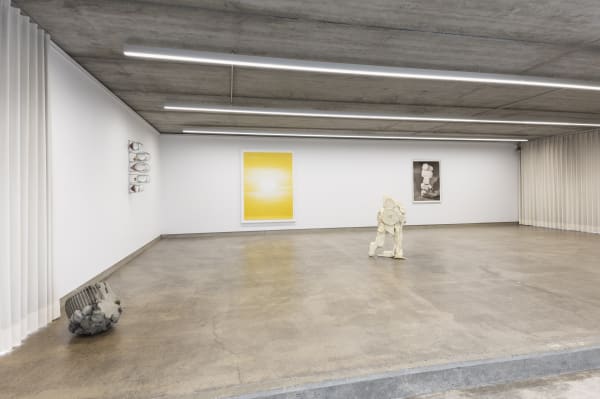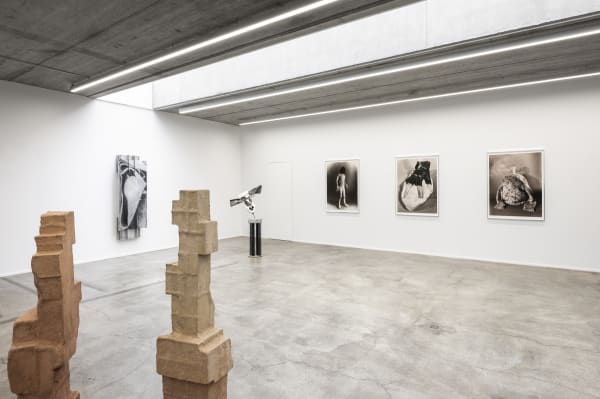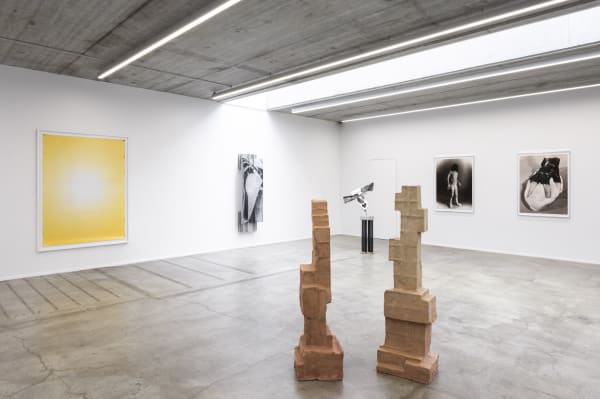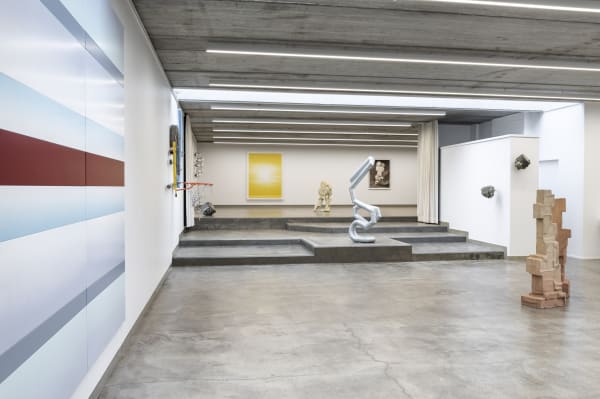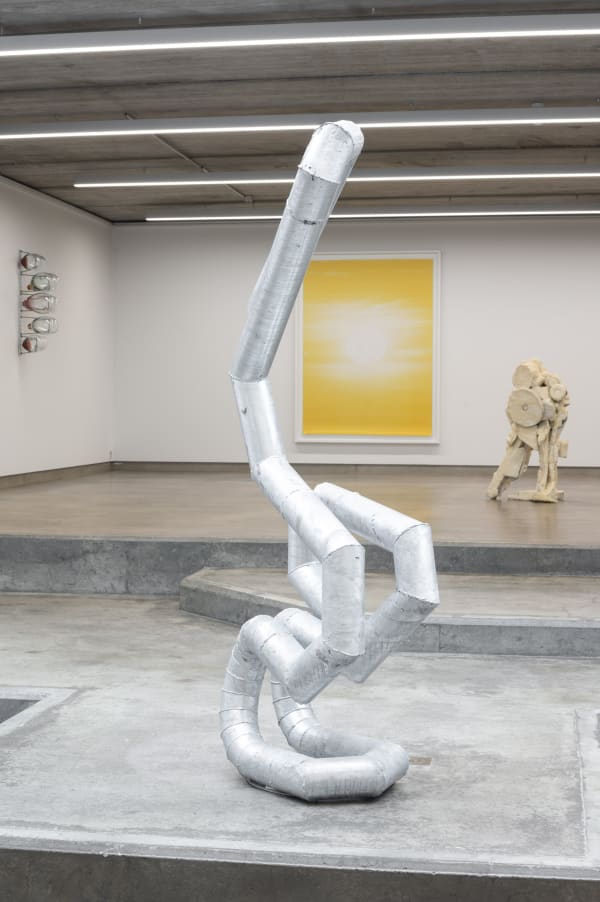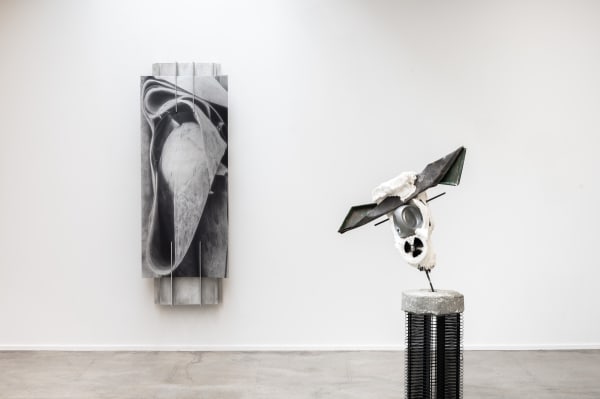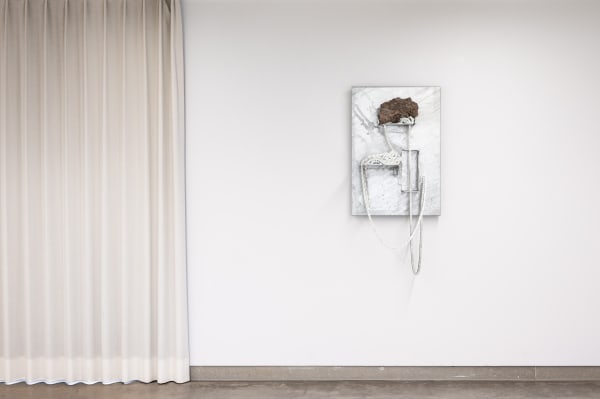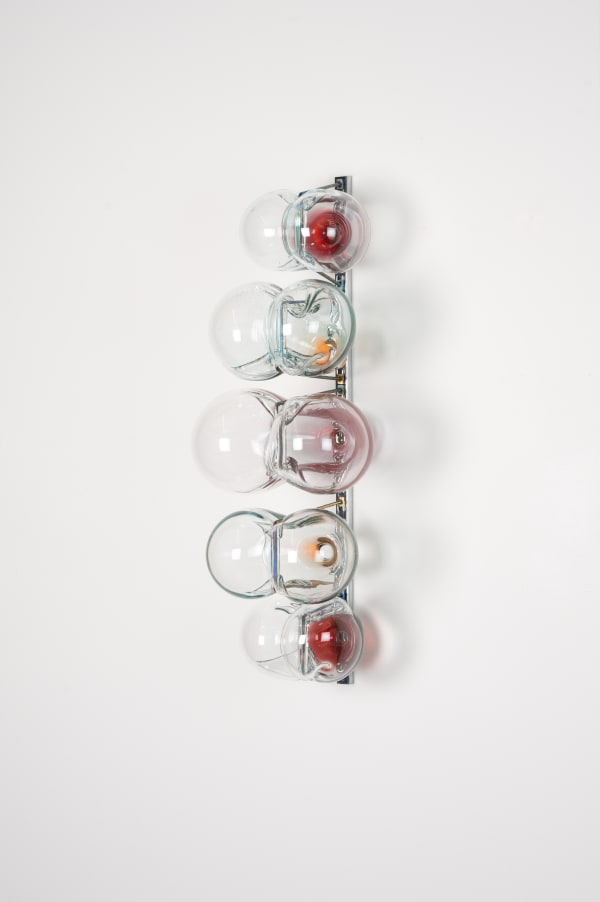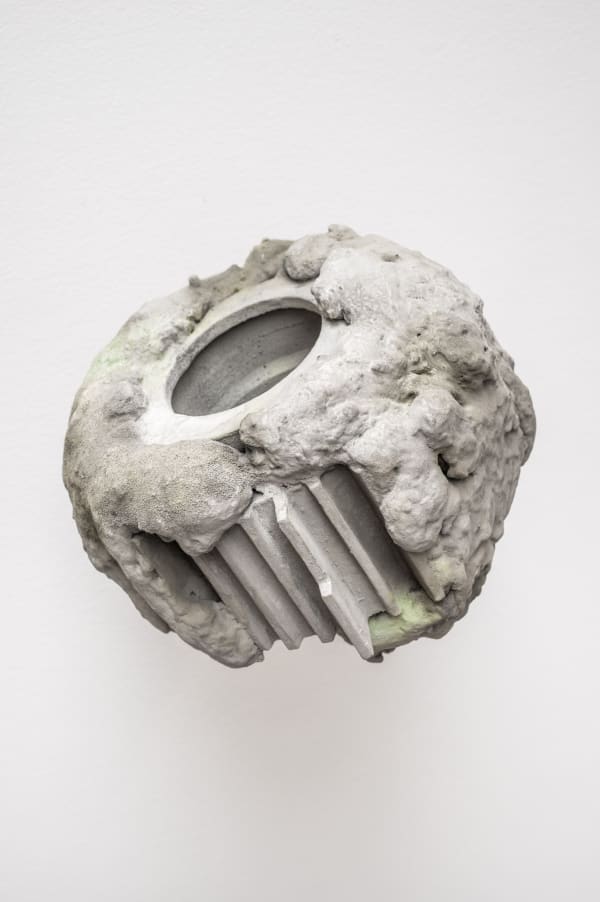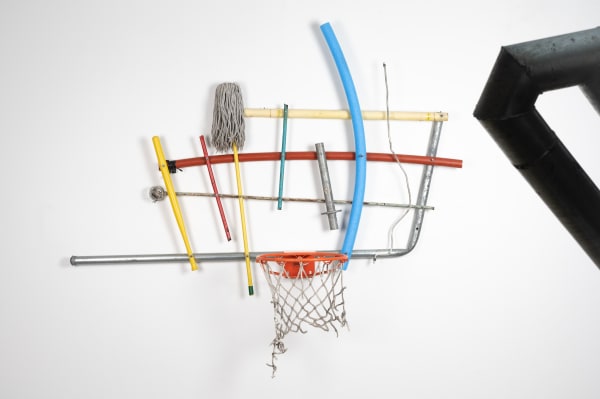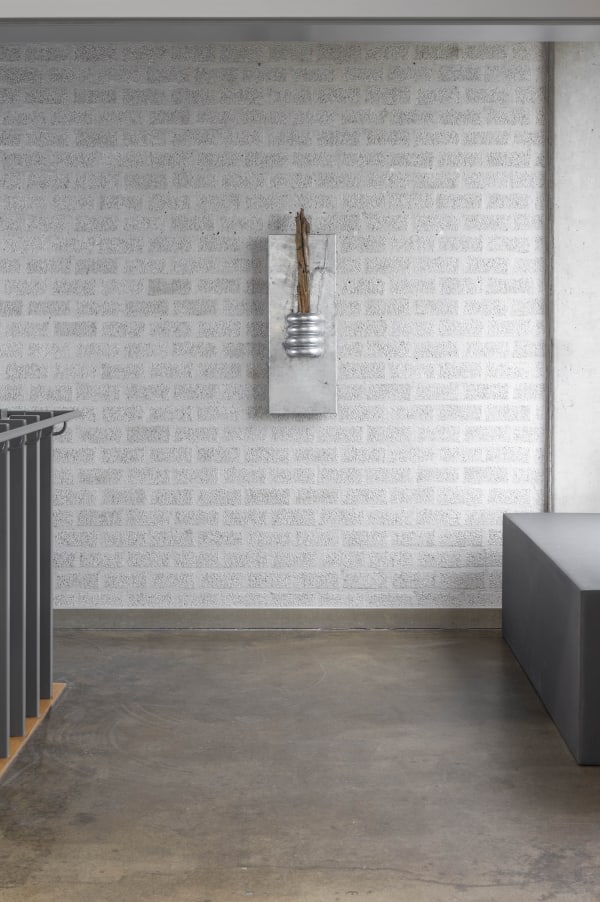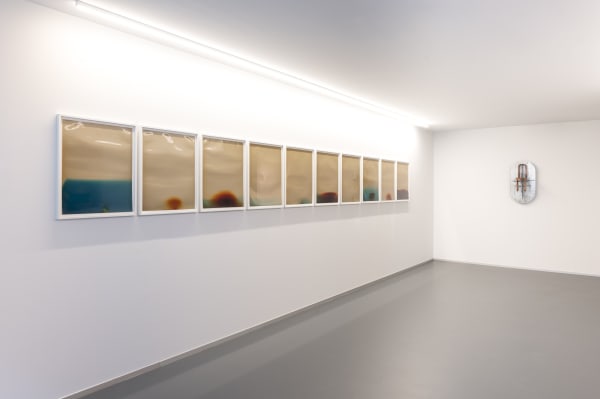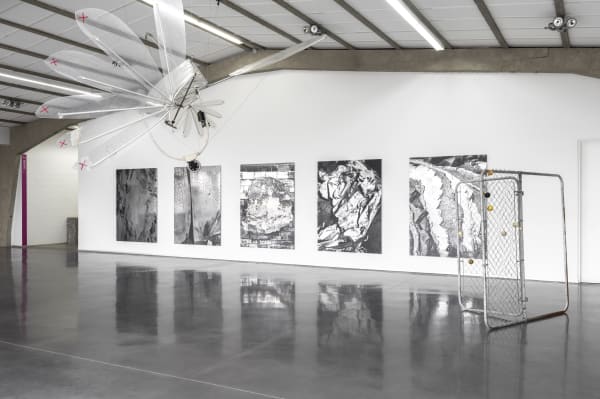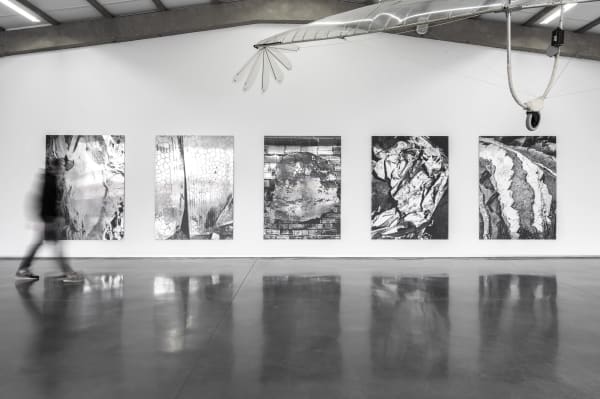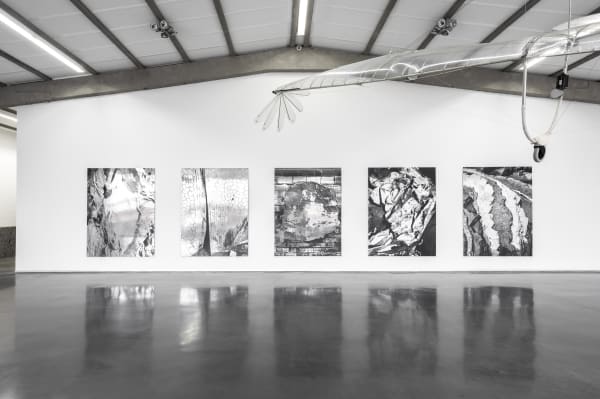10/10: curated by sybren vanoverberghe
Sybren Vanoverberghe‘s (°1996.Kortrijk, BE. Lives in Ghent, BE. Works in Otegem, BE) own work, which focuses on the constantly changing landscape and its remnants, serves as a thematic anchor for the exhibition. Through his use of photography, collage, and found objects, he explores the complex relationships between history, nature, and heritage. While the exhibition does not provide a direct answer to the question of what an artist’s work is about, it offers a glimpse into the sources of inspiration and connections that drive their artistic practices. Join us as we celebrate the talent and vision of Sybren Vanoverberghe and his invited artists in 10/10.
Invited artists:
Gabriele Beveridge – Tony Cragg
Paul Kooiker – Luca Monterastelli
Ged Proost – Sébastien Reuzé – Eva Robarts
Bram Vanderbeke – Katleen Vinck
Gabriele Beveridge (°1985, Hong Kong, CN. Lives and works in London, UK) is known for her sculptural and conceptual practice that combines materials as diverse as hand-blown glass, photo chemicals and faded advertisements from beauty salon windows. Rather than presenting a critique of commodity goods by way of simulation, Beveridge takes the cosmetic mechanisms that prop up consumer desire and carries them to their logical extreme.
Tony Cragg (°1949, Liverpool, UK. Lives and works in Wuppertal, DE) is one of the world’s foremost sculptors. Constantly pushing to find new relations between people and the material world, there is no limit to the materials he might use, as there are no limits to the ideas or forms he might conceive. Cragg understands sculpture as a study of how material and material forms affect and form our ideas and emotions.
Paul Kooiker (°1964, Rotterdam, NL. Lives and works in Amsterdam, NL) has been distinctive for years with work in which photography is, as it were, freed from its traditional parameters. Kooiker can be regarded as an installation artist rather than a photographer “pur sang”. He is never after the perfect photographic image. Paul Kooiker’s work in fact always arises in post-production, in the selection and manipulation of his images. All his recent works are created with an iPhone. At a time when everyone photographs with their smartphone, Paul Kooiker uses precisely this tool to create a parallel world that is apparently detached from it and that cannot be copied.
Luca Monterastelli (°1983. Forlimpopoli, IT. Lives and works in Milan, IT) is developing an entirely individual, contemporary sculptural vocabulary. His sculptures often consist of vertical, vaguely anthropomorphic forms, which create formal paradoxes that encourage the viewer to explore the work from up close. By going to the bone, the bare essential, using one of the most ubiquitously used materials, steel, and rudimentary found objects, sticks and stones, he strips away all predetermined narration, purpose and hierarchy and tries to re-liquify their meaning, so they can still become anything.
Ged Proost (°2000, BE. Lives and works in Turnhout, BE) has just graduated as a visual artist and sculptor at the PXL in Hasselt, Belgium. He likes to work with found materials, in fact everything around him can serve as inspiration. He collages, assembles and transforms discarded materials and found objects into new autonomous sculptures. He aims to create art that not only has aesthetic value, but can also carry a powerful message. With his work, Proost turns dumped waste from a consumption-driven society into a new form of beauty.
Eva Robarts (°1982. Lives and works in NY, USA) work is ostensibly born of a kindred sensibility to Arte Povera which employed such down-at-the-heel materials as wax, broken glass, soil, and wood as its vernacular. Recently Robarts employs materials familiar from the stolid realms of industry and construction to more light-hearted end. The artist is constantly collecting, recording and sketching detritus in urban areas which she sees as abandoned spirits, the cast-offs of society. The interplay of materials asks fundamental questions regarding existence and consumer culture. What is man’s relationship to his community, himself, and the planet?
Sébastien Reuzé ‘s (°1970, FR. Lives and works in Brussels, BE) work is about life. It consists of a research on the different uses of photography, its different techniques, related to the story, generally drawn from the literature. The photographic matter, the paper carrier, is very important to the artist. Photography for him is not an objective representation of the reality. It exists as an object, you feel its physical presence and in this way it distinguishes itself from reality. Reuzé sees it as a skin that takes on a sensual shape.
Bram Vanderbeke (°1991, BE. Lives and works in Ghent, BE) works as an artist and designer. His practice is diverse but consistent and stands out for its material, sculptural and monumental qualities. Vanderbeke explores and transforms the possible interactions between an object, its architectural environment and its user, further challenged by raw materiality, form and functionality. His works are at the same time autonomous artistic manifestations and utile solutions, an ambiguity Vanderbeke deliberately aims for. The works often influence the spatial perception of the environment they become part of, sometimes by extending an existing space through creating a new space within it.
Katleen Vinck (°1976, BE. Lives and works in Antwerp, BE)) often starts from a profound fascination for architecture; its history, its meaning, its materials, and its technical intricacies. She imitates human imitations and as a result her objects form their own typology. Aspects from her background, scenography, visual arts and architecture mix into hybrid forms. Smooth and reflective surfaces are juxtaposed with robust and solid materials such as concrete. The duality of her work, balancing between peril and fragility, can also be translated into the contrast between aesthetics and functionality or even the border between nature and architecture.
